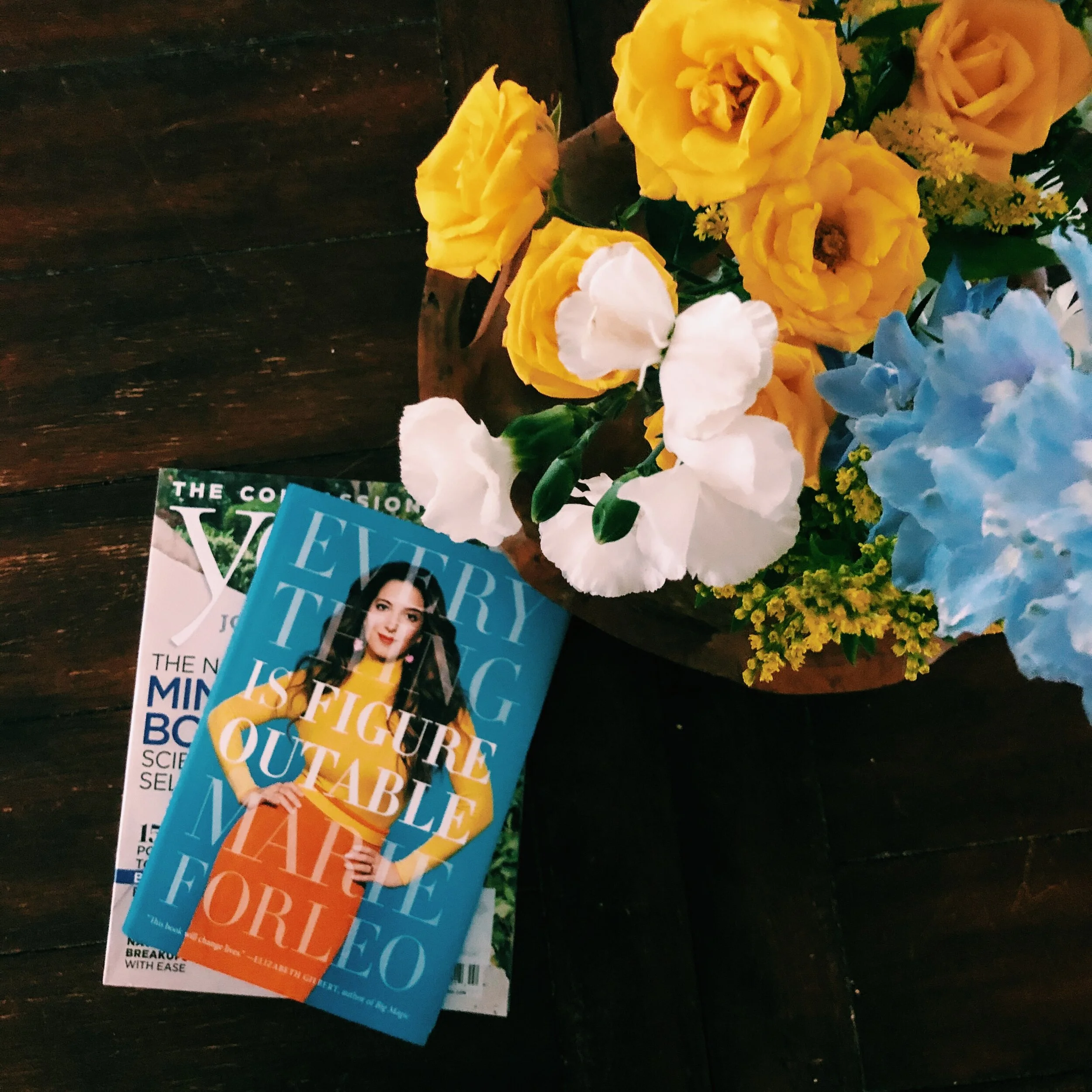I had been awaiting Marie Forleo’s book for a while, and I’m not surprised by how much I enjoyed it.
Marie’s straight-talking, no-nonsense Jersey Girl sensibilities speak directly to my soul. But I was surprised by how much this book was able to push me forward towards my goals.
I read this book a few months after quitting my full-time job at a University and making a huge career shift towards being a self-employed life coach slash yoga teacher slash whatever else would help pay my bills.
Many of the stories in this book come from Marie’s own first steps after a big career shift, and I was able to see myself in the portrait of the “multipassionate entrepreneur” she painted.
This book is, as the jacket will tell you, a giant kick in the pants for anyone who is allowing themselves to be held back by excuses from their dreams, big or small. If you’re feeling called to make some sort of change or move in your life, but find yourself doing more talking and dreaming about it than actually making things happen, this book will not subtly nudge you forward. It will stare you in the face and tell you to jump or go home.
Biggest “Aha!” Moments:
“Nine times out of ten, our fear is directive. It’s a signpost, pointing us in the exact direction our soul wants to go.” p. 97
Your body and your nervous system can only communicate with you in so many ways. If there’s an idea that keeps popping into your head, one that you just can’t seem to let go of, fear is one way that your nervous system is tipping you off to your excitement. You might feel your heart get a bit quicker and your head a bit lighter. Maybe you even get the jitters. Just because you interpret this to mean “fear”, it doesn’t mean it’s actually dangerous. It may be pure excitement. Since the signal is so similar (excitement and nervousness have the same physical sensations) your brain may jump in with stories to explain your fear and rationalize inaction. But if you choose to interpret it as excitement instead, your brain can just as easily be recruited to tell you all the awesome things that might happen if you move forward.
“Clarity comes from engagement, not thought.” p. 121
So many people struggle with indecision. Which path should I choose? Should I take the job or not? Should I try this new thing or no? We often try to figure out the answer intellectually, before we commit. This is our way of trying to avoid a mistake, and it’s totally normal. But it almost never leads you to actual clarity.
The fastest way to get clarity is to just DO THE THING and see how it goes. Do you enjoy it? Do you hate it? And there are lots of ways to take action and get engaged that don’t entail committing 100%. You can reach out to someone who already does the thing and talk to them in person. You can shadow someone who does the thing. You can do part of the thing and see how it feels. You will get so much more clarity from taking action than you will from trying to think your way into the right answer.
Most helpful exercise:
This is a book about actually doing things, and the exercises are indispensable. Each chapter offers an activity to help actually move you forward. My favorite one is called “Fear Tamining 101”.
Once you’ve decided on an idea you’d like to move forward on, one that is exciting but also pretty scary, let yourself visualize the worst-case scenario.
What is the worst thing that could happen if you try this? What if the worst-case scenario happened, and then things got even worse? What would that look like?
Now, create an action plan for that worst worst-case scenario. What would you do if that happened?
Could you live with that?
Then let yourself visualize the opposite end of the spectrum. What would be the best-case scenario if you go down this path? What would you gain if everything went perfectly?
Does the potential good stuff outweigh the potential bad stuff?
I actually did a version of this exercise when deciding to leave my full-time job and start working as a life coach. I figured out the worst-case scenario (I’d be broke, my husband would get frustrated and leave me, and I’d probably lose my house and my car). Once I saw that I was able to decide A) if I thought it was likely. Probably not. Especially because once I identified my fears I was able to start working on plans to stop them from happening (like weekly budgeting dates, couples counseling, etc.). And I was able to decide B) if I would regret not trying it more than I’d regret trying it. That was the kicker for me. Sure, the worst might happen, but if I never tried then the good things might never happen either, and I wasn’t willing to take that chance.
Final Verdict:
Strongly Recommend
If you’re feeling sort of stuck right now, this book will help you get unstuck.
If you’re already feeling motivated to make something big happen, this book will give you practical tools to help whip yourself into shape.
If you’re coaching, advising, or managing other people, this book will give you tons of tools to help move your clients, students, or employees forward as well.
Ready to open this book? Click here* to get your copy!
*As an Amazon Associate, I receive a small commission on items purchased through this link.



